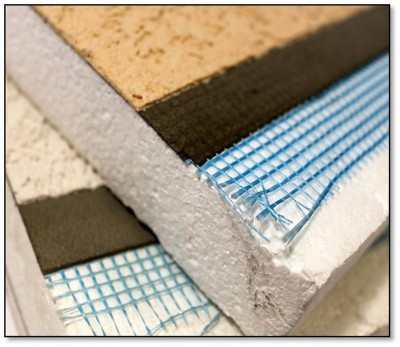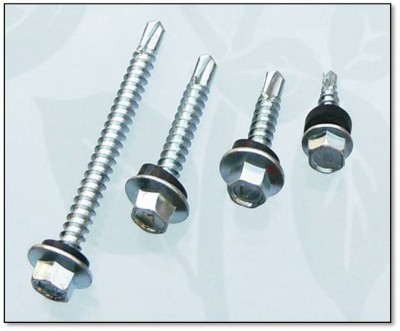The self-drilling screws are designed to be driven by an electric drill fitted with a hexagonal nut-driver bit, taking care not to overdrive the screws and strip out the holes drilled into the metal siding or supports. Flat washers or fender washers should always be used with these screws, to prevent the small screw heads from pulling through the sign materials.
Masonry buildings
Sign attachment methods for masonry will vary, based on the calculated load and the specific type of masonry surface. For instance, some so-called brick fascias are not solid masonry, but only a thin veneer that requires an alternate method of attachment. So, to avoid making a costly mistake, installers should always verify the wall composition before planning a project and selecting fasteners.
Further, it is important to use proper procedures when installing fastener anchors into the masonry. Masonry anchors should be placed into holes drilled into mortar joints or directly into the masonry, but not near the edges of bricks, blocks or masonry walls. The larger the fastener’s diameter and the deeper it penetrates into solid wall material, the stronger the connection will become.
When using lag screws and shields, a hole should be drilled that is long enough for complete insertion and tightening of the lag screw. If the screw hits the back of the hole during tightening, the anchor will be pushed out of the wall.
Special care is also called for when installing the fasteners so as to avoid splitting bricks or concrete blocks. This will include observing minimum spacing dimensions for adjacent anchors.
When using concrete screws, the installer should always verify the screws are tightly secured into the wall material. A concrete screw will cut threads into the concrete, so care must be taken not to strip out these threads when the screw is inserted.

Exterior insulation and finish system (EIFS) panels cannot support signs directly, so fasteners must instead be attached securely to the interior wall framing.
When using adhesive-type fasteners, the manufacturer’s instructions must be followed carefully, to ensure solid bonding and proper strength.
EIFS panels
Exterior insulation and finish system (EIFS) panels are used to customize the wall surfaces of many of today’s buildings, but these panels cannot support signs of any substantial weight; nor can screws, bolts or other fasteners be attached to walls composed of these materials.
EIFS panels are essentially rigid-foam panels with a hard, outer coating. If they are backed by plywood sheathing panels, then wood screws or other fasteners may be used to attach lightweight signs; but to avoid possible damage to the building surface, signs should never be tightly fastened in direct contact with the EIFS panels themselves.
The fasteners for these signs must be attached securely to the interior wall framing and adequate clearance must be provided between the sign and the EIFS surface, so the tightening of the fasteners does not compress the wall panels.
Fasteners for EIFS applications can incorporate ‘spacer sleeves,’ which are placed over the bolts to provide adequate standoff space for the sign and to prevent damage to the exposed wall surface. EIFS manufacturers recommend maintaining a minimum clearance of 12.7 mm (0.5 in.) between the rear of the sign and the wall surface. Pipe sleeves are inserted over the sign’s fasteners to maintain adequate clearance when the sign itself is installed.
A sealant should also be used, to prevent moisture penetration at the points where the sleeves and fasteners protrude from the EIFS panels.







The sinks ought to be precisely found the focuses of the encircling individuals, to abstain from part through the sides of the timber when embedded and fixed.
Nice sharing!
I realized that welding is entirely restricted on the show bureau, including the mounting edges. Any extra entrances into the show bureau must be approved, in composing. Harm brought about from water spills as well as welding may void the guarantee. Exhibition Stand Design
Its easy to say we are a sign company and can design/print your signs, Custom signs fabrication and installation is something that nobody really offers in the industry. Signs NY is offering complete customer solutions in signs industry.